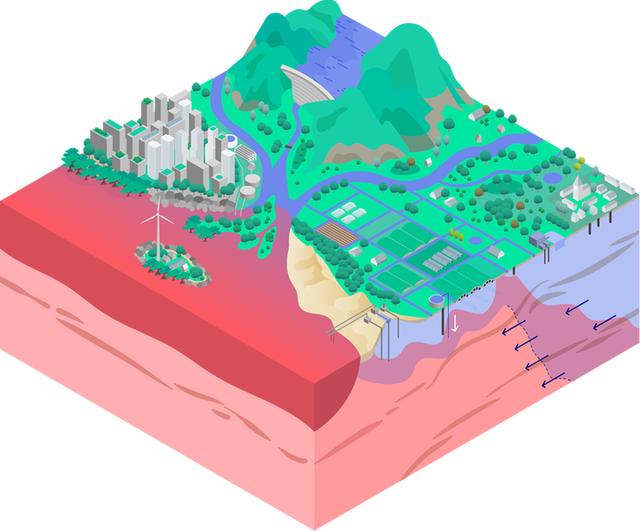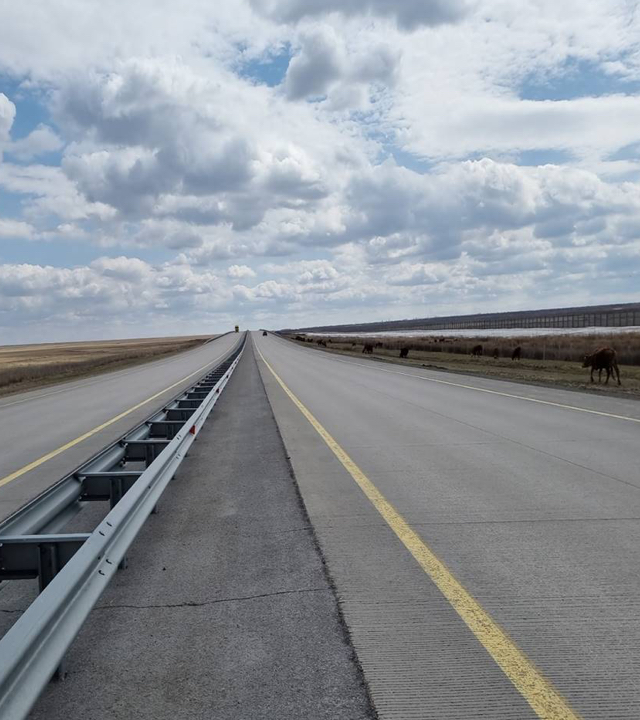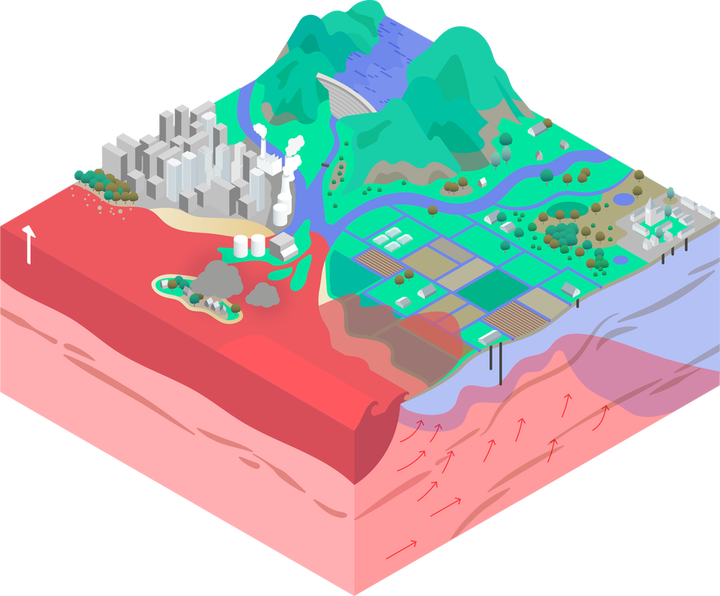
Salinisation
the slow disaster
A natural enemy is threatening our freshwater resources: salt. Accelerated by sea level rise, more frequent occurring hazards like storm surges or hurricanes, and by our own overextraction of fresh groundwater, this destroyer is slowly moving inland and from deeper parts of the groundwater systems. From there, it will increase salt damage to crops and threaten our drinking water sources.
In this infographic we show the past, present, and two possible futures for the delta under saline threat. One future is obvious: if we don’t act, most benefits of living in a delta will be lost to us.
Salinisation of the land in time
The past
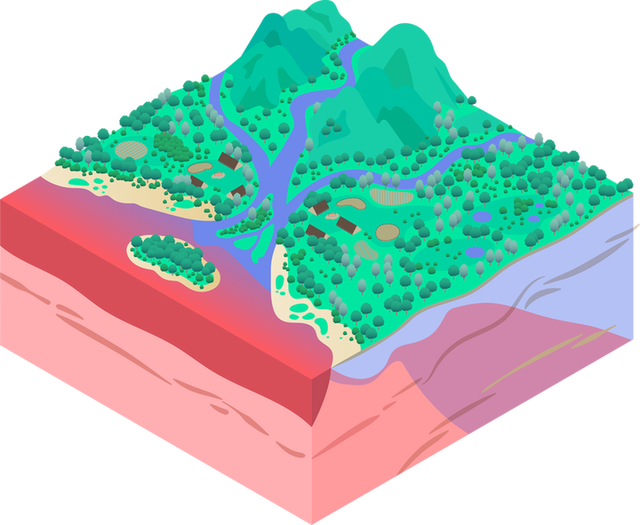
In the distant past barely any humans permanently lived in delta areas, mostly due to the hunter-gatherer’s nomadic lifestyles. This slowly changed as they began to grow their food and spend more time in once place.
Legend
Salt water
Fresh water
Brackish water
Salinisation of the land in time
The present
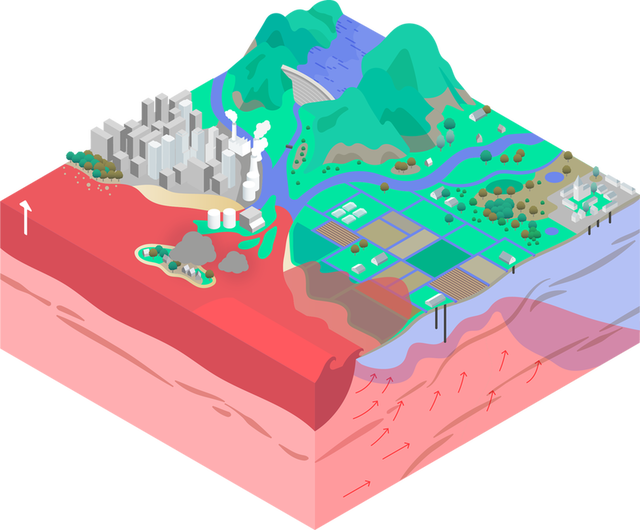
Today deltas are increasingly populated. This is due to the economic advantages, good soil for agriculture and sufficient water, water management, and because we are equipped to handle the threats posed by flooding.
Long-term effects
Less and more expensive drinkwater
Changes in forms of agriculture
Migration
Moving of industry
Health effects
Legend
Salt water
Fresh water
Brackish water
Salinisation of the land in time
The future

Salinisation forces people to move
Coastal erosion
Drowned islands
Overtopping of sea water
Freshwater lenses shrink
More land subsidience
Increase of fresh water shortages
In order to safeguard our current standard of living and safety, we must adapt to the new situation.
Will we be able to make the change in time?
Legend
Salt water
Fresh water
Brackish water
And it happens globally...
How much fresh groundwater will decrease due to sea-level rise compared to present conditions,

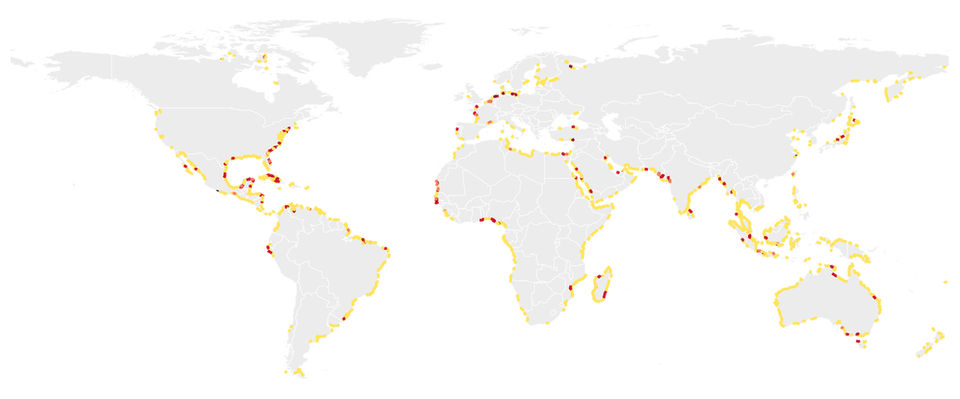
More than 35 million people could lose more than 10% of their fresh groundwater resources by 2100, compared to 2020, according to RCP 8.5 sea level rise scenario.
Some major countries where saltwater intrusion into coastal groundwater systems is taking place
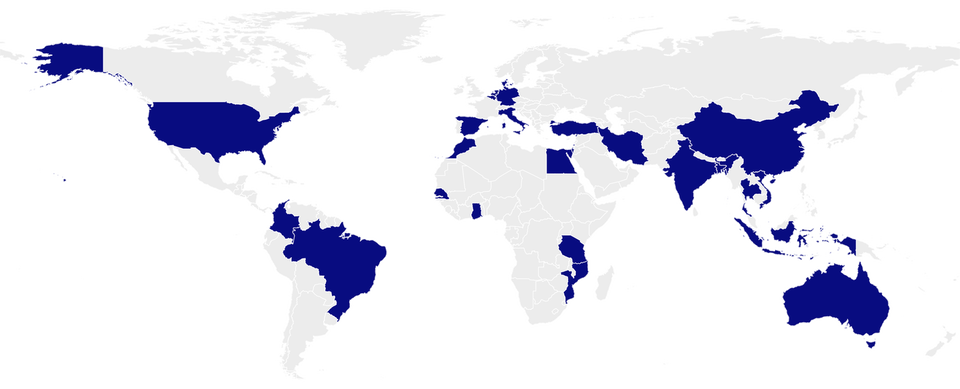
Italy, Spain, USA, Brazil, Morocco, Egypt, Tanzania, Australia, China, Bangladesh, India, Israel, Iran, Indonesia, Belgium, the Netherlands, Denmark, Turkey, Colombia, Ghana, Germany and Senegal.
Facts and figures
Essential basic necessities
50%
of our drinking water is fresh groundwater
38%
of irrigable area is irrigated with fresh groundwater
Pressures on the coast
Population density is significantly higher in coastal areas
One third
of the world population lives in coastal areas (<70km) being 2.65 billion
Ongoing trend of coastal migration
This is associated with global demographic changes. Most of the world megacities are also situated at the coast
Groundwater salinisation does not just occur in coastal areas
Total global land area negatively affected by salinity
5x
the size of France
= 277 million ha
More information
Coastal defence
Prevent the seawater to overflow the coastline or overtop the coastal defence.
Rainwater harvesting
With improved understanding of the subsurface you can store excess (rain)water underground and use it during dryer times.
Less water usage/ spillage
Don’t use fresh water if it is not necessary; e.g., use brackish or salt groundwa- ter in swimming pools or for flushing toilets.
Brackish water as fresh water resource
In the coastal zone, fresh ground-water 'floats' on heavier saline groundwater with a brackish transition zone. This brackish water is easier to desalinate (and cheaper too).
Salt-resistant crops
Some crops grow better (and even taste better too) if there is brackish groundwater in the soil.
Desalinise with new technologies
Desalinization techniques are getting cleaner and energy efficient. Desalinization is a key asset in the coastal zone.
Waste water (re)usage & circulation of water flows
Use recycled (waste) water to fluish your toilet and car washing. Don't make fresh water go to waste.
Changing your water usage mindset
Utilities can be changed but consumers also need to be aware of spillage and consumption. How much fresh water is used to produce certain crops, meat or clothes?
Aquifer storage and recovery
Refill the aquifers that are used for irrigation whenever there is a surplus of fresh rain in the wet season, or fresh river water.
Water pricing
Once water is priced, water use will drop over a short time.
Driver

Sealing subsurface and shortage of fresh water
Effect
Less groundwater recharge infiltrates into the subsurface
No replenishment of the fresh groundwater resources
Driver
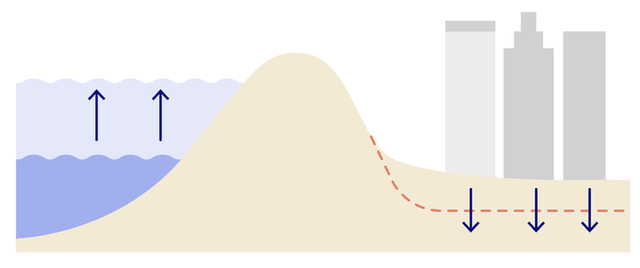
Sea level rise and land subsidence
Effect
Shifting of saline/fresh interface further inland
Coastal freshwater resources are reduced
Overtopping of near shore areas
Lower elevation levels, so saltwater overtopping can reach further inland
Driver

Overextraction and water mismanagement practices
Effect
Upward flow of saline groundwater
Lower sediment inflow, so deepening of river beds and more saltwater intrusion of surface water
Upstream less fresh surface water availability
Lower freshwater recharges through rivers, so less freshwater availability from surface water
Driver

Storms, hurricanes, typhoons and cyclones
Effect
Seawater overtopping and infiltration into the subsurface leading to salinisation of fresh groundwater resources
Salinisation of the land in time
The past
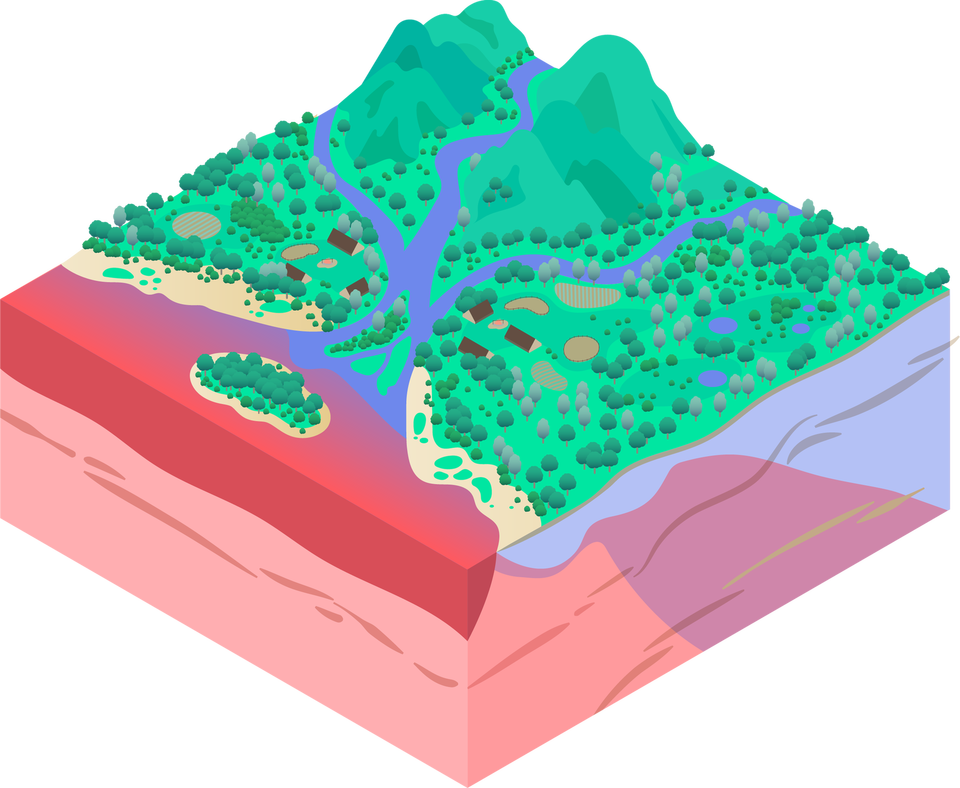

In the distant past barely any humans permanently lived in delta areas, mostly due to the hunter-gatherer’s nomadic lifestyles. This slowly changed as they began to grow their food and spend more time in once place.
Salinisation of the land in time
The present


Long-term effects
Less and more expensive drinkwater
Changes in forms of agriculture
Migration
Moving of industry
Health effects
Today deltas are increasingly populated. This is due to the economic advantages, good soil for agriculture and sufficient water, water management, and because we are equipped to handle the threats posed by flooding.
Salinisation of the land in time
The future
In order to safeguard our current standard of living and safety, we must adapt to the new situation.
Will we be able to make the change in time?
Option 1: Without adaptation
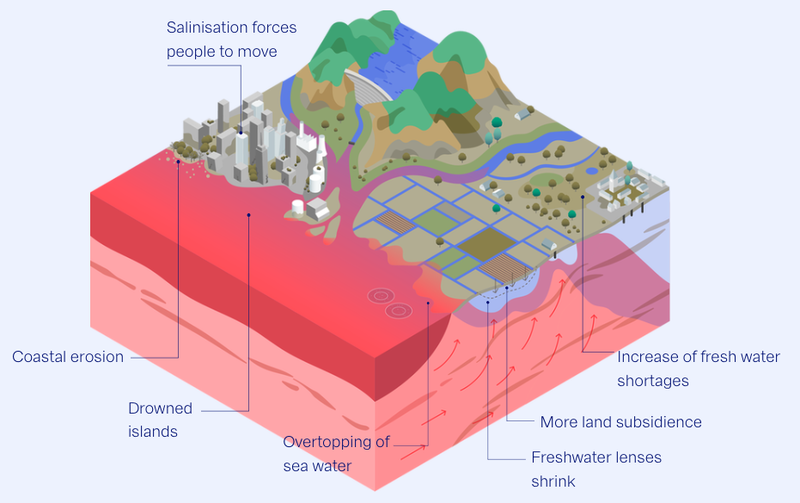

Option 2: With adaptations


